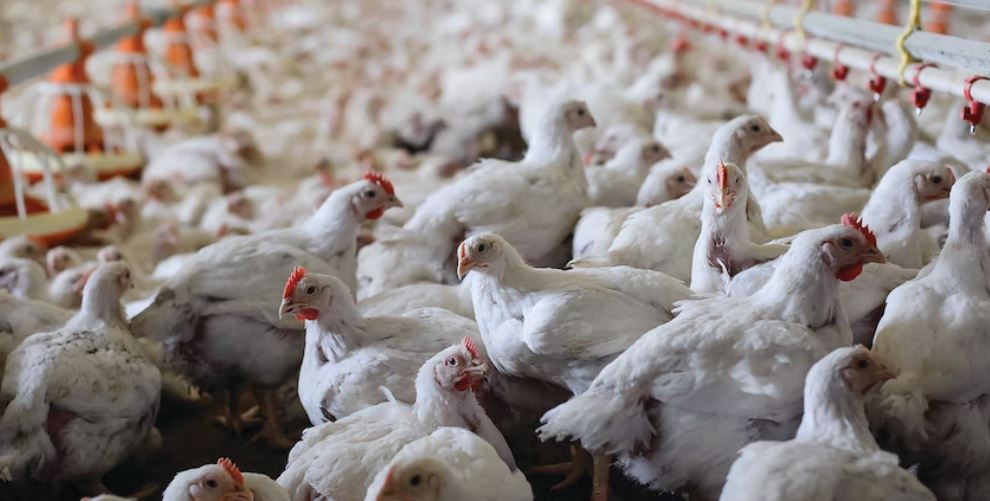Detecting coccidiosis in poultry flocks early could prevent performance and financial losses for producers.
Controlling coccidiosisis a major challenge to the poultry industry. Producers are normally not able to detect the problem until three to four weeks after onset even though the infection can spread through flocks within a week. Researchers estimate that coccidiosis causes $3 billion in global economic losses annually.
Additionally, the modern poultry industry records vast amounts of data related to various aspects of production intended to help them make flock decisions. However, the amount of data being collected can be overwhelming and is sometimes not fully capitalized on.
“We have heard from multiple nutritionists, veterinarians and production managers that they have all of this data. There was a need to utilize it and connect it to health or production metrics,” said Chelsea Phillips, DSM data scientist for Precision Services.
“Oftentimes, that data is utilized at specific points in time but isn’t tracked over time.”

A system that can detect coccidiosis or potentially other diseases in flocks immediately, according to a daily or weekly collection of bird and health information, could allow for early intervention before animal performance declines and improve the poultry producer’s return on investment (ROI).
Identifying coccidiosis in the field
Coccidiosis is a result of the Eimeria species that colonizes in the intestinal tract of poultry. Microscopic E. maxima oocysts found in birds through intestinal scrapings indicate the presence of coccidiosis.
“When veterinarians do intestinal scrapings, they will assign a score of 0-4 based on how many oocysts were found. We can utilize that scoring system to validate our models that we have created, » Phillips explained.
While this practice is common in the U.S., a study conducted by DSM and North Carolina State University (NC State) looking at broiler blood biomarkers in response to coccidiosis challenges found that potassium and carotenoids respond to the presence of coccidiosis.
These potassium and carotenoid biomarkers began to change three to seven days prior to obvious symptoms of an infection.
“It may be possible to generate an early warning system that could trigger a coccidiosis flag at around 10-13 days after infection, but this needs further confirmation in the field,” she said.
To determine if an early warning flag could be established, the team created a database, known as Verax, full of bird information collected from producers. The early-warning system is based on the analysis of blood biomarkers and can give poultry producers insight into what is happening in their birds and time to address an issue before it causes loss.
Additionally, the system allows producers the opportunity to answer questions such as: what is prevalent in the field, are there seasonal or husbandry effects impacting coccidiosis incidence, how does that relate to performance data, and how can this be prevented in the future.
After developing the system, researchers took the system into a customer setting to determine if it could take a blood sample at 14 days of age, run the sample through their system and predict coccidiosis infections by 28 days of age.
For three out of four farms that were tested in the customer setting, the system correctly predicted a 28-day coccidiosis prevalence based solely on the data inputs of blood samples from the 14-day time point.
The blood sampling results are immediate, according to Phillips. Within a few hours of the sample being submitted, the blood data is synchronized to the server and database. That data becomes available to the customer within 24 hours.
“We are currently in the process of identifying what is the optimal time to sample blood and what is the window for being able to accurately predict that prevalence. We are beginning to make those basic science and biological connections to what the model is using to make those predictions,” Phillips stated.
“In the U.S., it is a common practice to perform necropsies on birds to evaluate the health of the flock, but in other regions this is not the norm,” she added. After further research, blood samples could be an alternative option for the poultry industry in those areas.
More about the early detection tool
“Data is what led us to this new tool to identify coccidiosis in the field,” she said.
The new technology, operated through an iPad, was created to collect biomarker data such as blood measurements, bird level information such as weight and sex, necropsy observations from veterinarians on site, and Eimeria maxima samples.
The data was transferred to the team’s « expert system » in which all the previously created algorithms and models live. Multiple years of bird data was captured from farms and used to create baseline ranges in the system.
After producers collect the data and enter it into the system, a team of scientists, in conjunction with information from peer reviewed literature, takes the data and gives suggestions and insights according to the conclusions drawn.
Insights from an analysis of blood biomarkers can indicate the likely incidence of disease without waiting until birds become symptomatic. The advance warning gives producers time to act early on, supporting production efficiency, animal health, welfare and sustainability.
“This digital tool allows us to be predictive and monitor the performance, welfare and nutrition of flocks over time,” Phillips added. “The system allows the industry to begin to link other factors to coccidiosis prevalence or other health issues, such as diet and environment, that may be altered under certain health conditions. »
While the model is only currently available for broilers, the team is working to expand to layers, breeders, swine and ruminants.
Source : https://www.wattagnet.com/poultry-future/new-technologies/article/15544138/big-data-could-aid-in-early-detection-of-coccidiosis







